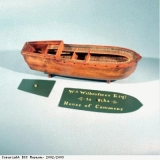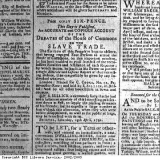The legal framework
By the late 18th century, the ending of the slave trade was being hotly debated. Those who wanted the slave trade to end began a campaign for ‘Abolition’. Abolitionists worked in a variety of ways to change public and political opinion.
After many years of campaigning by the Abolitionists, the end of the slave trade became reality. The Committee (later the Society) for the Abolition of the Slave Trade finally achieved its aim of ending the trade in slaves. The support of Members of Parliament (MPs) like William Wilberforce allowed the society to influence other MPs and the government. Over the many years of campaigning for Abolition, this support and influence allowed the introduction of many Bills (proposed laws) for the end of the slave trade. The debates on these bills were widely reported in the local papers in places like Bristol, where there was strong interest in the outcome whatever that happened to be. Pictured here is an advertisement for printed copies of a debate, which took place in the House of Commons, on the slave trade, in 1792. The Abolitionist William Wilberforce took part. Wilberforce had described the brutality of the trade. He referred to an attack by six ships, including three from Bristol, on the town of Calabar (now in Nigeria, West Africa), in order to control the price of slaves there. Wilberforce also referred to the death of a girl of 15, which was the result of the brutal punishment she received at the hands of a Bristol ship’s captain, called John Kimber. The local references meant that the published booklet of the debate sold out, and the bookseller was obliged to order more.




